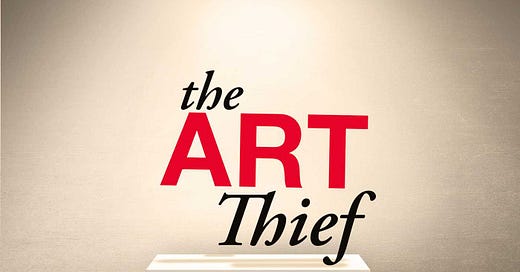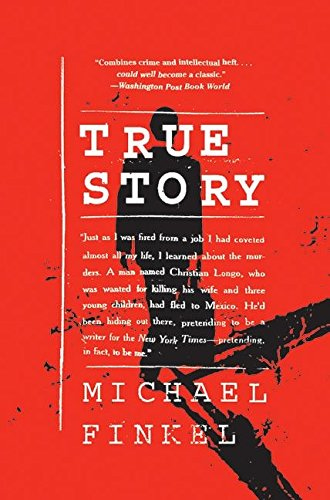Reading the nonfiction books of Michael Finkel has become my guilty, not so secret pleasure. Why do I feel ashamed about reading his work? There’s just something about how easy it is that makes me feel slightly dirty, like Finkel is smoothing edges that shouldn’t be smoothed. And yet I can’t deny that I slurp up Finkel’s stories like a cool pina colada on a sticky day. When reading True Story and The Art Thief this year I purposefully extended my commute to catch the train so I could continue reading. It’s compulsive behaviour, like Finkel has some sort of power over me, inspiring a euphoric feeling that’s also a little dangerous. The unstable boundary between euphoria and danger is the key tension in Finkel’s work. We as readers become skilled tightrope artists alongside him, experiencing oscillations in judgment without ever tipping too far either way and thus falling out of love with the story.
I first heard about Michael Finkel through an article in the New Yorker, reviewing his latest book about the most prolific art thief in living history. That article pondered why we call all other thefts ‘robberies’, but in the art world it is a ‘heist’. We have this romantic vision of a thief stealing for aesthetic passion, rather than mercenary gain, even though this is almost never the case. And yet Stephane Breitweiser was the exception to the rule – stealing almost two billion dollars worth of art and antiquities and never selling a single piece. Finkel’s book takes us inside Breitweiser’s psyche, and into his attic of unimaginable treasures. We watch as high-minded acquisitions of emotionally transformative pieces evolve into obsessive, narcissistic acts where the goal is less than clear. It is an exhilarating, fascinating ride, and beautifully rendered in present tense by Finkel, who was able to gain access to Breitweiser for interviews after many years of courtship.
Before I got my sticky mitts on The Art Thief, which was only recently published, I read Finkel’s first foray into nonfiction, the bestselling True Story published in 2005. While The Art Thief is a relatively straightforward narrative, with Finkel only present as the invisible authorial voice, True Story is an altogether more convoluted and ambitious project. There are two stories that become insidiously intertwined. The first involves Finkel himself, who is readying himself for career catastrophe as the New York Times (his former employer) prepares to publish evidence that Finkel has deliberately falsified facts in his reporting on a feature story about cocoa farm workers on the Ivory Coast. On the eve of the ruinous news breaking, Finkel receives an unusual phone call from a reporter about a recently arrested man in Mexico, accused of murdering his wife and three children, who has been assuming the identity of the New York Times reporter ‘Michael Finkel.’
The true Michael Finkel, not oblivious to the redemptive opportunity that has presented itself on a platter of pure coincidence, decides to pursue the story of this strange doppelgänger, whose real name is Christian Longo. The two men strike up a prolific and close friendship through letters and phone calls, sharing intimate feelings on both sides. Inevitably Finkel’s bubble of wilful blindness bursts when he finally sees Longo’s manipulative narcissism in its bleakest form during a sentencing hearing. With a degree of humility, Finkel is able to reflect on the flaws in himself that correlate to Longo’s own overconfidence, ambition and ability to rationalise bad behaviour. In other words, there was a lot of white male entitlement going on across the board, but this vocabulary was not in parlance in the early 2000s.
While Finkel does make efforts to reflect on his own mistakes, I think what was missing was a more sophisticated and transparent appreciation of the benefits Finkel was deriving from his special relationship with Christian Longo, namely the opportunity for his own career to be resuscitated when the story of a lifetime fell in his lap. Instead we get a watered down version of his own feelings of shame with a limited perspective on why he found it so easy to empathise with a man who uses similar justifications for his actions. Maybe that’s part of why I couldn’t enjoy this book without a murky feeling of complicity. True crime straddles always that line, and great true crime makes you think about it. While reading True Story I thought a lot about Janet Malcolm’s slim masterpiece The Journalist and the Murderer – a similarly layered, metacognitive true crime tale, but even more exquisitely conceived.
I shouldn’t think of Finkel’s books as a vice; rather they are a ‘sometimes treat’ on my nutritional reading pyramid. It’s not something I can afford to get lost in every day, but there is a deliciously addictive pleasure in letting a confident writer haul you along through the bizarre twists and turns of human behaviour.





